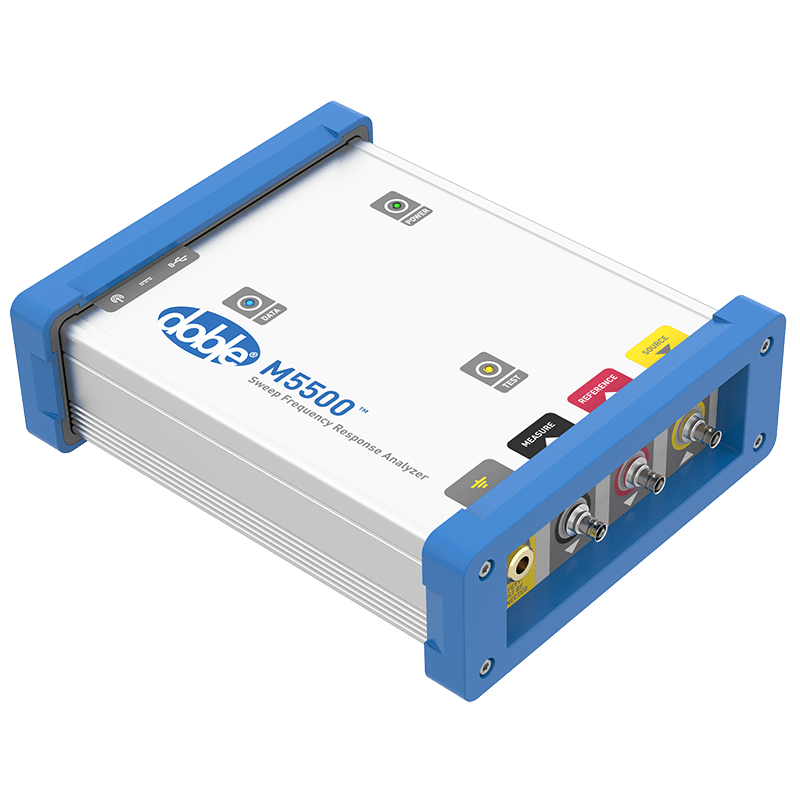
M5500
Sweep Frequency Response Analyzer
The M5500 Sweep Frequency Response Analyzer is the newest generation of SFRA diagnostic instrument from Doble.
With incredibly fast sweep speed and expanded dynamic range, you can use the Doble M5500 test set to investigate mechanical integrity of transformers, reactors and other equipment with windings. Coupled with the ease-of-use and powerful features of the new SFRA 6 Software, conducting SFRA testing and analysis of your apparatus has never been easier or more productive.
- Lightweight and rugged portable test instrument
- Typical sweep speeds between 15 and 30 seconds for reduced overall testing time
- Default frequency range of 20 Hz to 2 MHz, expanded range from 10 Hz to 25 MHz
- Dynamic Range > 150 dB
- Wired or wireless connection to the controlling PC
- Includes new SFRA v6 Software for control and analysis
- “CE” mark indicating conformity to European Union directives regarding electromagnetic compliance, safety, and hazardous substances
If you can measure the frequency response of a transformer, then you can identify physical movement and other issues with the winding, core, and connections.
The M5500 sends an excitation signal into the transformer and measures the returning signals. Comparing this response to baseline readings and test results from similar units allows you to identify deviations and confirm internal mechanical problems.
The M5500 reduces the uncertainty about apparatus condition by providing solid evidence of mechanical integrity or winding movement. Use it to help determine how a transformer is deteriorating, if it can go back in service after a fault, or if it has been damaged during transit.
Specify Doble SFRA baseline testing as part of the factory test for your new transformer and call for retest at every major transportation mode change or crane lift. Use it after system faults and during routine testing as part of your diagnostic tool kit.
- Ensure transformer performance, reduce maintenance costs and increase the service life of transformers
- Identify problems such as core movement, winding deformation and displacement, faulty core grounds, partial winding collapse, hoop buckling, broken or loose clamping structures, shorted turns and open windings
- Use as part of your regular maintenance program or any time you suspect a problem
- Measurements are highly repeatable so even subtle changes can be used for diagnostic purposes